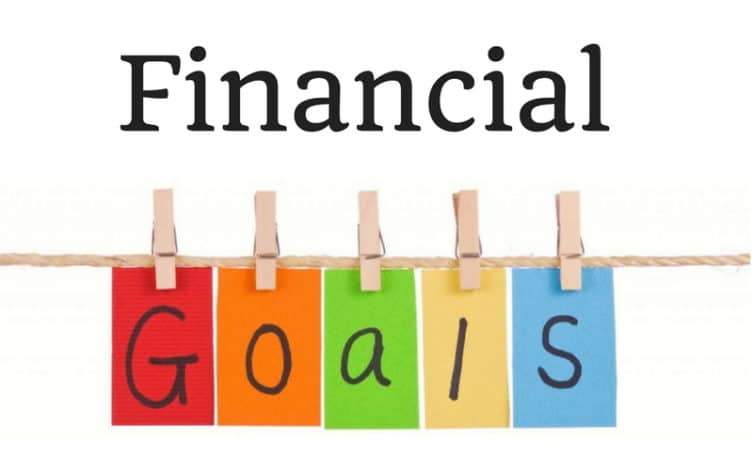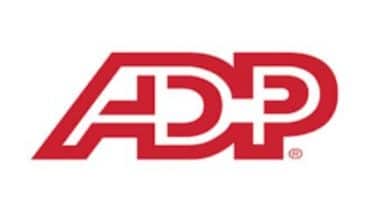Learning how to write a business proposal is crucial to any type of business. A written offer from a seller to a potential sponsor is known as a business proposal. In the lengthy sales process, business proposals are frequently an important step. A proposal tells the buyer whether the seller can meet their needs and frames their demands in a way that will benefit the seller’s products and services. Planning is essential before writing an investment proposal so that it can present compelling arguments for why your startup is worth funding.
It doesn’t matter if you’re trying to work with another business or if you just want to draft a proposal for potential customers. Here is our guide on how to write an effective business proposal that can aid you in bringing in money for your company.
If you need help with writing your business plan or business proposal, you can reach out via email and have one of our professionals help you out.
How to Write a Business Proposal
A business proposal is a document that is sent to potential customers in the hopes of collaborating on a project, whether it be a partnership or wanting to be the company that assists with a particular project.
#1. Create Your Title Page
Since this is the first thing your client will see, it’s critical to quickly communicate your brand and proposal. Your title page should include a few key pieces of information about your company and the proposal, such as the proposal’s title, your company’s name, contact details, and the date you’re submitting it.
The title page of your document should be formal while still attempting to pique the interest of the reader. It’s essential in establishing the mood of your proposal, so, like any advertisement, it should reflect the style and personality of your company. Generally speaking, it’s a good idea to add your company’s logo somewhere.
#2. Compile a Table of Contents
Navigating the document’s contents will be simpler if it has a table of contents. Even though it sometimes comes after the cover letter, it should be one of the first pages, even though it doesn’t have to be the first page. Your content page ought to follow a timeline.
#3. Write a Cover Letter
Introducing yourself in your cover letter is a good idea. One page is the maximum length for your cover letter, which should be brief. In a few paragraphs, briefly describe the background, goal, and USP of your business.
#4. Write the Executive Summary
Possibly the most significant section of your proposal is the executive summary. An executive summary explains your motivation for submitting the proposal as well as your approach to demonstrating why you are the best choice for the client. If your proposal as a whole isn’t very long, your executive summary should only be two to four pages long.
#5. Outline Your Customers’ Problems and Your Company’s Solution
You should elaborate on the solutions you proposed in your executive summary in this section. It is helpful to anticipate the questions your client may have when drafting your proposal pages and to give them thorough responses. It takes a lot of research to create problem and solution pages. You want to demonstrate to potential clients that you have done your due diligence by demonstrating that you are aware of their needs and their specific goals.
#6. Create a Pricing Table
Follow your problem and solution pages with your pricing table. It will include a complete list of all of your products and fees. Make sure your customers can easily understand what they’re paying for and the customization options available to them.
In the section titled “About Us,” of your business proposal, you should tell the history of your company, with you, the founder, serving as the lead. A good “about us” page should be succinct but still, have every component of an engaging story.
#8. Summarize Your Qualifications
You’ll be explaining in detail in the qualifications summary why your company is the most qualified to assist potential clients in achieving their objectives. The best qualifications summaries cite examples from the public to support their claims. Include client success stories, client endorsements, social media kudos, case studies, endorsements from reputable industry leaders, and anything else that could demonstrate the value you offer your clients.
#9. Lay Out the Terms of the Agreement
Your marketing proposal should conclude with a summary of the terms and conditions that will help your clients understand the offer you are making to them. It’s best to consult a legal professional when drafting this section because proposals might be regarded as legally binding contracts in some jurisdictions.
How to Write a Business Proposal for a Loan
The first step in obtaining the funding your company requires from a bank is to prepare a strong, well-documented commercial loan proposal.
A banker will frequently get in touch with your company through your business loan proposal. Therefore, you must create a document that accurately represents your company.
#1. Cover Page and Table of Contents
Your company name and contact details should appear on the cover page. If you have a logo, the cover is the ideal location for it. The business plan for a loan application should have a table of contents and page numbers so that lenders and you can easily locate particular sections.
#2. Executive Summary
Business documents frequently start with executive summaries so that busy people can quickly access the most important information from a longer document. On one page, succinctly summarize the entire business plan. Describe your business, your product, and the inspiration behind it. Include your main rivals and the reasons your product will prevail over them. Talk about the economy as it relates to your customers and products, if appropriate.
#3. Description of the Company
You should go into greater detail about your company’s history, current operations, and strategy in the main section of your business plan. A mission statement, company values, a list of any strategic partners, and information about your corporate structure should all be included in the company description. It will be fairly brief.
#4. Market Analysis
You should present a competitive analysis of your market after outlining the company’s mission and target market for the lender. Instead of a specific strategy for how you’ll take advantage of the market, the market analysis concentrates on its characteristics. Find the gaps in the market that your company will fill.
The impact of external factors on your company should also be covered in the market analysis. Even though your market analysis will contain information about your rivals, the real focus should be on your target market. Reputable sources should form the foundation of the market analysis. For instance, it should be obvious to readers where the information came from when discussing your rivals and their products.
#5. Organization and Management
The management structure of your business should be listed in the section on organization and management. An organizational chart, a description of the structure, and salary projections are common features of business plans.
Every management position should be listed along with the incumbent, their duties, and any prerequisites. List your Board of Directors and any experience they may have that is important to the success of your company on a separate page if you have one.
#6. Service or Product
It’s time to give a thorough description of the goods or services your business offers. Who are your customers and what do you sell? How would you describe your business model? What need of the clientele are you meeting? Business plans frequently list all of their products along with their anticipated or existing prices.
The estimated lifecycle of your service or product as well as any completed, ongoing, or planned research and development should be included in the service or product section. A description of any trademarks, patents, or other intellectual property rights that might be relevant should also be included.
#7. Marketing and Sales
There are three critical pieces of information in the marketing and sales section:
- How will clients learn about your goods?
- What channels and techniques will you use for sales?
- What growth plan do you have?
#8. Financial Analysis
For lenders, the financial analysis section is crucial. Finances for the next three to five years must be projected in the financial analysis. Naturally, it becomes harder to predict accurately the further into the future the forecasts are made. Making a business plan with three-year forecasts, but having a five-year forecast available in case investors request one, is one solution. The financial forecasts must contain the following:
- Statements of income
- Statements of cash flows
- Budgets for capital expenditures
- Balance sheets
- They could also consist of financial indicators pertinent to your sector, such as profit and loss statements, sales projections, and financial metrics.
The calculation and examination of a company’s margin of safety based on revenue and related costs is known as a break-even analysis. This section also referred to as a P&L forecast, will include a forecast of the revenue and profit your company expects to generate from its sales.
Using a cash flow forecast, you can estimate how much money will enter and leave your company over a given period (typically 12 months). Your anticipated income and expenses are included in the forecast. Ratios are a common tool used in business plans to evaluate and evaluate a company’s performance. In this situation, projected ratios are a good way for banks to assess the potential of your company and can also act as a planning benchmark.
#9. Funding Request
Your funding request is now due! You must specifically state why you require business financing, the amount you are requesting (both current and prospective for the following five years), and the purposes for which you will put the funds to use. Describe how funding will help your business (and its strategic plan) succeed overall. Here’s an illustration of how you might structure your funding request:
- Current financial requirements.
- Any additional funding needs over the following five years.
- What you plan to do with the money you get.
- Any long-term financial strategy.
#10. Appendix
The following items are suitable for an appendix:
- CVs of principals
- Tax filings
- Real estate records that are relevant
- Documents outlining your company’s legal framework
- Purchasers’ letters of intent to buy
- Promotional materials and advertisements
- Sales projection
- Additional financial predictions
- Staffing strategy
- Statement of profits and losses
- Balance sheet
How to Write a Business Proposal for Investment
A carefully crafted presentation that details the objectives and mission of your company is known as an investment proposal. It can be challenging to convince an investor to support your company. In the end, you’ll position yourself much better if you can produce a clear, succinct, and persuasive business proposal.
#1. Cover Letter and Table of Contents
The table of contents is the second page in a business proposal for investors after the cover page. The problem you’re solving for your target market should be mentioned in your cover letter, which should be kept to a minimum. The objective is to pique interest and secure a meeting with an investor so that you can more fully pitch your company. Keep your cover letter succinct, interesting, and direct.
#2. Executive Summary
Your value proposition, which is a succinct statement outlining information about your target customer, their issue, your suggested solution, and the advantages your solution provides to both the customer and the investor, should be included in this summary. This document, though still brief, contains more information about your company in a few pages than your cover letter did.
#3. Financial Forecasts
Investors will unavoidably request a copy of your financial projections. You will require a balance sheet, profit and loss statement, budget for expenses, cash flow forecast, and sales forecast. You should prepare to share historical results, as well as any other important business metrics if you have them. Investors will always examine your company closely, so be ready to discuss every aspect of how your company will function financially.
The ROI you anticipate the necessary investment will produce should be mentioned right away. A crucial consideration is to keep it realistic. What does the investor stand to gain? Create a compelling proposition that makes it clear that your idea can generate revenue.
#4. Company Performance
Give a brief description of the company and historical and present financial information if it is an established one. The stakeholders in the current project and their accomplishments, as well as compelling market statistics that highlight the potential of your startup, should all be mentioned if you haven’t yet established a business.
#5. Planned Marketing and Sales Methods
Describe your sales strategy in this section as well as your marketing strategies and distribution channels. A crucial aspect of this might be the pricing strategy you’ve chosen for your product and an explanation of why it’s the most lucrative one.
#6. Company & Management
This is where you outline the specifics of your company. What is the structure of your company? Who makes up your team, and what are their qualifications?
#7. Operational Team Logistics
This can include the physical address of your business, the number of staff members you currently have or plan to hire, the tools and/or technology needed to start the project, and any pertinent operational expenses.
#8. Financial Plan
You must prepare a forecast for your balance sheet, cash flow, and profit and loss. Optimistic yet grounded in reality should describe your financial plan. You must record your assumptions and business plans because this is a delicate balance and your forecast will almost certainly be off.
#9. Project Financing
Given that this is the proposal’s main objective, use precise figures and provide plenty of information. This section should include information on the funding sources, projections, timetables, return on investment, and investment exit strategy.
#10. Appendix
Finally, if you want to share any important additional information, you can do so in an appendix. Any number of things can be added, including product diagrams, more information about how your service is provided, or additional research.
What Is the Basic Format for a Proposal?
All of the aforementioned components are present in a fundamental when you want to write a business proposal. Although different industries may have their distinctive features (for instance, an app developer may use interactive elements to demonstrate how their product functions), these elements are thought of as standard features in business proposals.
What Are the 5 Cs of Business Writing?
#1.Clear
Be certain that the reader understands your goal and intention. Recognize who your audience is.
#2. Concise
Make sure not to use excessive words. Keep all communications brief and direct.
#3. Courteous
Kindly address the reader. Please and thank you are appropriate phrases to use.
#4. Complete
Be sure to provide the reader with all the information they require.
#5. Correct
Check for grammar, spelling, and punctuation errors by editing and proofreading.
What Are the 3 Main Types of Proposals?
#1. Formally Solicited
Requests for proposals (RFPs), requests for quotes (RFQs), invitations to bid (IFBs), and requests for information (RFIs) all contain published requirements that must be addressed in the proposals.
#2. Informally Solicited
These proposals are made when a private business, a public agency, or another group agrees to give a good or service to a single business that has a solid reputation and a track record of success. This type of proposal’s standard format includes details about a particular product, such as the cost and timing of deliveries.
#3. Unsolicited
Brochures for products and services are unsolicited proposals. They are always generic and do not directly address the needs of the customer or the requirements. Vendors make use of them to introduce a good or service to a potential client.
What Are Common Mistakes in Proposal Writing?
It can be very upsetting to have your proposals rejected, especially if you put a lot of effort into writing them. Your pitch should remind potential customers of their problems and the reasons they started looking for a solution in the first place. Here are some of the most typical errors made when writing proposals.
- Creating a proposal that is solely about you
- Not emphasizing client return on investment
- Not making use of infographics. Boring, black-and-white proposals don’t seem to be as effective as they once were.
- Making the request too lengthy
- The document is poorly written.
- Ineffective executive summary
- Not convincing clients of the benefits
- Grammar and spelling mistakes
What Makes a Good Proposal?
A well-written proposal clearly outlines each stage of the sales cycle and provides a succinct explanation.
What Are the 8 Steps to Writing a Proposal?
- Start with a good template
- Make your introduction appealing.
- Give specific guidelines outlining the timeline for when it can be carried out.
- Display evidence of earlier, profitable projects.
- Decide on a reasonable price
- Indicate the conditions in full.
- Describe your credentials.
- Create a strong conclusion.
Conclusion
Contrary to popular belief, learning how to write a business proposal is very significant. Your business proposal might not be useful to you right away, but you can still use it to plan your company’s strategy, get funding, assess the benefits and drawbacks of your brand, and use it as a reference for future choices.
Business plans and proposals are among the services we offer here at Businessyield Consults and we will be glad to offer them to you. All you have to do is contact us and we’ll take it from there.
How to Write A Business Proposal FAQs
What is a Business Proposal?
A business proposal is a document that is sent to potential customers in the hopes of collaborating on a project.
What are the Types of Business Proposal?
- Formally Solicited
- Informally Solicited
- Unsolicited
What Are the 5 Cs of Business Writing?
- Clear
- Courteous
- Concise
- Complete
- Correct
Related Articles
- A BUSINESS PROPOSAL: Meaning, Examples, Template & How to Write It
- Examples Of Successful Grant Proposals: All You Need (+ Free pdfs)
- WHAT IS A GRANT: Best 2023 Guide and US Practices
- CONSULTING AGREEMENT: Requirements, How to Write It, and Template
- Examples Of Successful Grant Proposals: All You Need (+ Free pdfs)
- A BUSINESS PROPOSAL: Meaning, Examples, Template & How to Write It






